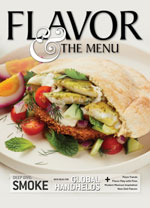

As a Southern chef, Virginia Willis naturally associates seafood with the region’s signature cuisine. “In the South, we have two coasts: the Atlantic and the Gulf of Mexico. Seafood is an inherent component of Southern foodways,” says Willis, author of Secrets of the Southern Table (Houghton Mifflin Harcourt, 2018).
Willis is as much a historian as a culinarian, detailing highlights in the evolution of Southern cuisine and seafood, as well as the significance of global influences on both. “Traditional Southern seafood, especially along the Gulf, has been tremendously influenced by the influx of Vietnamese following the Vietnam War. There are now many Vietnamese shrimpers along the Gulf Coast, and, as a result, many Viet-Cajun seafood restaurants in the region,” she says. “Meanwhile, in land-locked Atlanta, which is home to 50 percent of the Hispanics living in Georgia, there has been a rise in marisquerias, Mexican seafood restaurants that serve everything from ceviche tostada to head-on prawns with fresh lime and chile de árbol.” Willis is enjoying the influx of global flavors and culinary fusions. “We seem to be returning to a global emphasis, and it’s nice to see a world of flavors available to both chefs and consumers.”
When it comes to seafood preparations, a go-to technique for Willis is slow roasting. “We all know about long, slow stews and braised meats. However, fish can be slow-roasted, as well,” she says. “Slow-roasting makes a beautifully tender, evenly cooked piece of fish. Properly cooked, the flavor of the fish is the star of the show.” Willis serves slow-roasted snapper with everything from tomato vierge to fennel-onion confit and herb-citrus salads.







